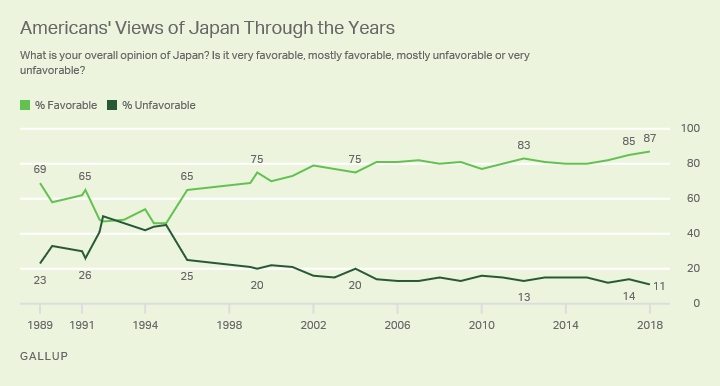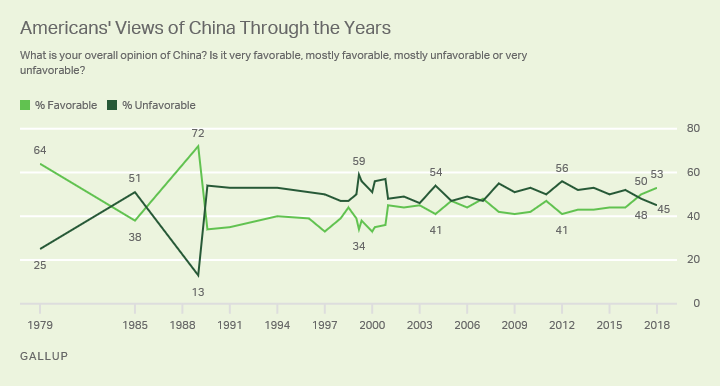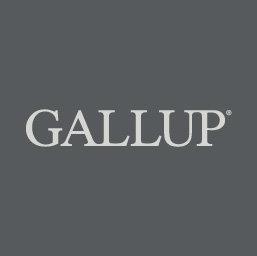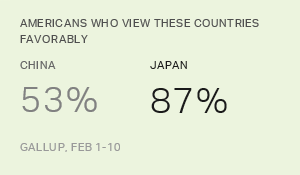Story Highlights
- Japan's favorable rating rises to 87%, among the highest for any nation
- China's favorability, still recovering from the 1989 crackdown, climbs to 53%
WASHINGTON, D.C. -- Americans' positive views of Far Eastern powers Japan and China have climbed to landmark levels this year, with Japan's favorable rating reaching a new high and China's rising above 50% for the first time in almost three decades.

Eighty-seven percent now say they have a favorable view of Japan, slightly above last year's previous record-high favorable rating of 85%. Over the past 40 years, Gallup has asked the favorability question at least once about 44 different foreign countries. In that archive, only Australia, Great Britain and Canada have ever had a higher rating than Japan's 87% this year.

China's favorability has increased markedly over the past two years, with a majority (53%) now having a favorable view of China for the first time since early 1989. Last year, China's favorable rating rose to 50% from 44% during the previous two years.
Japan's Consistently High Favorability Keeps Rising
At least 80% of Americans have viewed Japan favorably in every year since 2005 -- except 2010, when the percentage dipped to 77%. That represents a vast improvement from the early 1990s, when Japan's favorable ratings dropped below 50% in five of six polls as Americans wrestled with fears that Japan's economy threatened the prosperity of the United States. Those fears receded in the second half of the decade as Americans regained confidence in their own economy, and since 1996, Japan's favorable ratings have been at or above 65%.
Americans' current positive attitudes toward Japan are widespread, as the vast majority of Americans over the past two years have had a favorable view of the country, regardless of age, gender, income, education or political views. Its rating stands at 90% or above with some groups, including men, those with annual household incomes of $75,000 or more, and those with college degrees.
Decades-Long Climb Brings China's Favorability Above 50%
Twice before in Gallup's four-decade trend have more than half of U.S. adults had a favorable opinion of China. In 1979, the United States established diplomatic relations with China, and in September of that year, 64% of Americans had a favorable view of the country. In early 1989, President George H.W. Bush visited China, and in polling conducted a week after the trip, 72% had a favorable view.
That number plunged to 34% later that year in the immediate aftermath of China's crackdown on pro-democracy protesters at Tiananmen Square, and it stayed below 40% in all but two of 12 polls over the next 11 years. China's favorable rating rose to 45% and remained in the 40s until last year.
Unlike Japan, which gets similar favorable ratings from Republicans and Democrats, China fares significantly better with Democrats than with Republicans. Over the past two years, 59% of Democrats have rated China favorably, compared with 42% of Republicans. Views also differ significantly by age, with 67% of those aged 18 to 34 holding a favorable view, compared with 54% of those 35 to 54 and 39% of those 55 and older.


